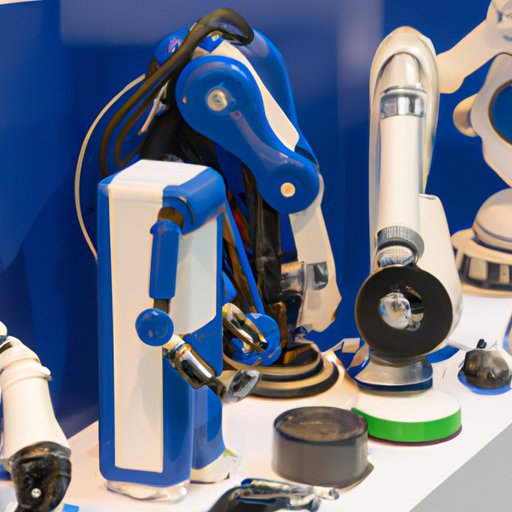Introduction
Robots have become increasingly common in our everyday lives, from industrial applications to domestic tasks like vacuuming the floor. But how do these machines actually work? In this article, we will explore the science, components and uses of robotics and examine the implications of this technology on our lives.
Exploring the Science Behind How Robots Work
At the heart of any robot is the ability to process information and respond accordingly. This is achieved through a combination of artificial intelligence (AI) and robotics programming. AI refers to the ability of machines to understand input and make decisions based on that input. Robotics programming is the set of instructions that allows robots to “learn” and take action based on those instructions.
These two elements are made possible through the use of sensors and actuators. Sensors allow robots to detect changes in their environment, such as temperature or sound. Actuators are the devices that allow robots to move and interact with their surroundings, such as motors and gears. Together, these components enable robots to sense their environment and make decisions about how to respond.

Understanding the Components of a Robot
To understand how robots work, it is important to look at the different components that make up a robot. The most basic components are motors, gears and power sources. Motors are responsible for providing movement to the robot, while gears allow the robot to change direction. Power sources provide the necessary energy for the robot to run. These components are typically connected to a computer control system, which allows the robot to interpret input and respond accordingly.
In addition to these components, robots may also include other features such as cameras, microphones, and touch sensors. Cameras allow robots to see their environment, while microphones allow them to hear. Touch sensors enable robots to detect changes in pressure or texture. All of these components work together to allow robots to sense their environment and make decisions.
Examining the Different Types of Robots
Robots come in many shapes and sizes. Industrial robots are used in factories to automate repetitive tasks, such as welding and painting. Medical robots are used in hospitals to assist surgeons in performing complex procedures. Consumer robots are designed to perform simple tasks at home, such as vacuuming the floor or mowing the lawn.

Investigating the History and Development of Robotics
Robotics has been around for centuries, with some of the earliest recorded milestones dating back to the 1700s. In 1801, Joseph Jacquard invented a loom powered by punch cards, which allowed the machine to weave intricate patterns without the need for human intervention. In the 1940s, Isaac Asimov wrote his famous “Three Laws of Robotics”, which laid down the ethical principles for robotic behavior.
The modern era of robotics began in the 1950s with the invention of programmable logic controllers (PLCs). PLCs allowed robots to be programmed to carry out specific tasks. In the years since then, robots have become increasingly sophisticated and capable of performing complex tasks with greater accuracy and speed than humans.
Exploring the Uses of Robots in Today’s Society
Robots are used in a variety of ways in today’s society. In the military, robots are used for reconnaissance and bomb disposal. In manufacturing, robots are used to automate production lines and increase efficiency. In the home, robots are used for mundane tasks such as vacuuming and mowing the lawn.
Robots are also being used in healthcare, from assisting surgeons to providing companionship for elderly patients. In education, robots are being used to teach students about coding and other STEM subjects. And in entertainment, robots are being used to create immersive experiences for visitors at theme parks and museums.

Looking at the Future of Robotics Technology
The future of robotics technology is an exciting and ever-evolving field. Experts predict that robots will become increasingly intelligent and capable of performing more complex tasks. They will also be used for a wider range of applications, from space exploration to personal assistance.
In addition, robots will become more affordable and accessible. This will open up new possibilities for businesses and individuals alike, allowing them to benefit from the advantages of robotics technology.
Conclusion
Robots are becoming increasingly commonplace in our everyday lives. By exploring the science, components and uses of robotics, we can better understand how these machines work and the implications of this technology on our lives. From industrial applications to personal assistance, robots promise to revolutionize the way we live and work in the future.
(Note: Is this article not meeting your expectations? Do you have knowledge or insights to share? Unlock new opportunities and expand your reach by joining our authors team. Click Registration to join us and share your expertise with our readers.)
